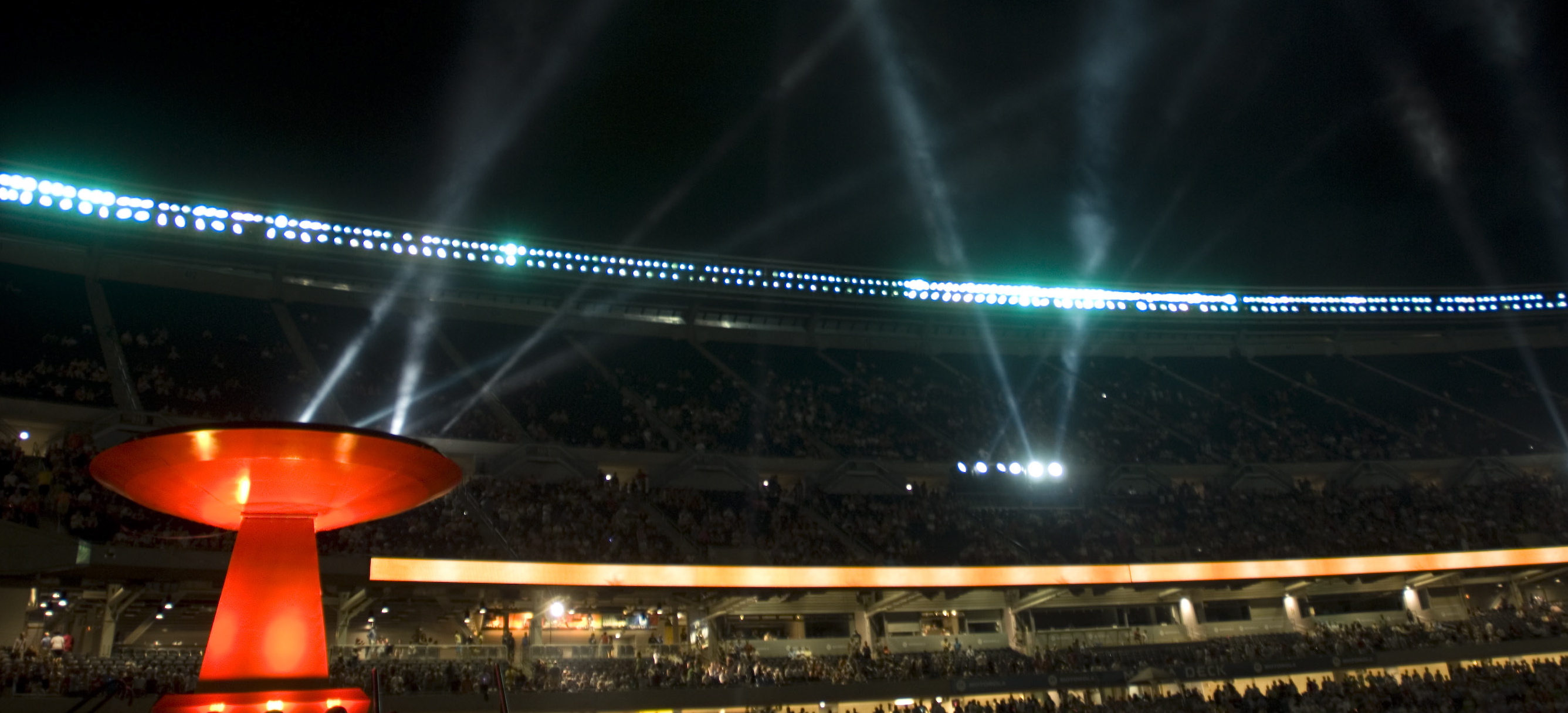Weeks of conferences, speeches, proposals and meetings have filled the time since my previous missive with myriad experiences and exchanges with some brilliant and accomplished minds, with some brilliant, fresh and hungry minds…and the occasional time-waster.
During this period, and pretty much always, azfarzat goes, I jot down ideas for posts on this blog; things that I believe or “know” from my experience that someone may have shared with me back in the Day, or something I learned from making my own mistakes or simply through the testing of my own limits. As I look over this post-it note collection of thoughts, rants and points of view, I’m seeing a cornucopia of content: tidbits of perspective; some, each or all of which apply to many contexts in addition to the primary audience of imho…
So. Wander through and see if you find anything enlightening, inspiring or engaging.
I came across this quote, some time ago, and have been moving the note around on my desk, collecting coffee stains, re-copying it and moving it again, ever since…
“We are natural storytellers. Our brains create complex visual journeys for us to take. We average 2,000 daydreams per day, each lasting an average of 14 seconds. That’s a lot of imagination. While there is no inherent problem with this—it is who we are—when we use our inner world as an escape for what the outer world is presenting, we’re not dealing with the challenges right in front of us. If we crave security, we’ll find it by dealing with what confronts us. Running from challenges into the inner world of thoughts will never provide the security we seek.” – Derek Beres
Mr. Beres, while quoting the above, is writing about the Art of Loneliness, and the reference (and link) is to what I found is a compelling article on Jonathan Gottschall’s “The Storytelling Animal.”
Maria Popova, in that article, posits, ““The universe is made of stories, not atoms,” poet Muriel Rukeyser memorably asserted, and Harvard sociobiologist E. O. Wilson recently pointed to the similarity between innovators in art and science, both of whom he called “dreamers and storytellers.” Stories aren’t merely essential to how we understand the world — they are how we understand the world. We weave and seek stories everywhere, from data visualization to children’s illustration to cultural hegemony. In The Storytelling Animal, educator and science writer Jonathan Gottschall traces the roots, both evolutionary and sociocultural, of the transfixing grip storytelling has on our hearts and minds, individually and collectively. What emerges is a kind of “unified theory of storytelling,” revealing not only our gift for manufacturing truthiness in the narratives we tell ourselves and others, but also the remarkable capacity of stories — the right kinds of them — to change our shared experience for the better.””
Everything I say or write in this space is about my ongoing quest for compelling, resonant, experiential storytelling… Sometimes it’s about thought process, at others about practical, real-world processes and disciplines…
To wit:
Prevent Details from Becoming Tasks…sometimes, it’s better and more productive to Just Do It. I have an acquaintance who spends up to an hour each day, making lists. Gradually, I watch that list become oppressive to him and watch as so many things that were originally simple tasks become Projects.
The real-world metaphor for this can be found in this same guy’s kitchen. He can’t bring himself to wash a dish until the sink is completely full – which can easily take days. Rather than spending 20 seconds to quickly scrub and rinse a plate from breakfast, he sets it in the sink; and this happens until that sink contains an ugly (and smelly) pile of dirty dishes. This makes something that could easily be a completely negligible routine become a Job; not only does washing that sink full of dishes take actual Time, now, but each dish – now dried and crusted with days-old whatever – takes longer to clean, in and of itself.
It’s an accurate metaphor. Don’t let things pile up. Do them, or delegate them; but get them off your “list.”
Responsiveness and Spontaneity. Hold these qualities close. While it’s good to have a plan – in fact, imperative to plan – do not eschew the possibility of changing direction on discovery or revelation. The plan is not sacrosanct; the Vision is the Thing.
As a Director, Creative Director or Producer, I am leading my team of professionals toward the realization of something – a vision or mission or goal – to which I have (hopefully) inspired all to strive. They trust me. They trust and respect me more for flexibility, responsiveness, humility (and the ability to accept and admit as I make mistakes or change direction based on new information or simple collaborative revelation) and fairness far more than would be elicited were I to exhibit an unwavering grip on a previously proscribed pathway or method.
- Stalwart and Committed = Good.
- Resolute and Unbending = Perhaps Not So Much.
Be open to Hear and willing to Change.
Keeping the Speeches Short. You know what I mean. Nobody likes a filibuster and a monologue is only good in theatre. When building a program for a launch or gathering of any kind (and in this case, we’re speaking more to those who create one-off events, ceremonies and celebrations), one of the most egregious sins is that of losing control of one’s speakers, resulting in the dissipation of audience attention – which, of itself, usually heralds the departure of Interest on the part of the suffering audience.
…and, there is consequence to making an audience suffer.
“Five minutes” sounds short. It is not. Hold your breath for one, full minute [I’ve said this, before] and see how long that feels. There’s your Rule of Thumb. Further, telling a speaker “five minutes” generally results in twice that…or more. Telling a speaker “one minute…okay, 90 seconds,” and then negotiating an additional 30 seconds will impress on the speaker that you mean what you say and result in a better speech, embraced far more receptively by the audience than would likely have been, otherwise.
Winnowing one’s speech to less than 3 minutes, more often than not, results in the most powerful, clear, compelling and resonant delivery of Message.
In 2011, I worked with an organization and their signature event in massaging and evolving the “program” part of the evening into a tight and powerful 17 minutes. This 17 minutes included ALL speaking parts (welcome, acknowledgements, thanks, introduction of honoree, honoree) as well as the entertainment component which, of itself, was 4 minutes long. In that 4 minutes, by the way, the audience was taken deep into their hearts, fell absolutely silent, then transitioned to standing and clapping and cheering.
Four minutes. This can be done.
The speakers had been unambiguously apprised of the importance of keeping the program brief and pithy, and were well aware of their respective constraints. Underscoring the seriousness of the parameters, each could see me in clear view, standing adjacent to the stage and prepared to step onto the stage, take the microphone and thank them, mid-overrun. While this resulted in good-natured ribbing from the lectern, the parameters were respected.
This is your job, as Executive in charge of any such production – ANY production; to ensure the message is delivered and the audience is happy. NO single component or participant in a theatrical production, ceremony, celebration or simple program trumps the importance of the Audience Experience. None.
Your job.
The 2011 event was a huge success; the word on the street for the ensuing year was at the “you should have been there” level. As a result, tickets exceeded sell-out in 2012.
In 2012, however, that same organization chose to relinquish all parameters and advisories to the speakers, resulting in over 45 minutes of speeches in a 3-hour stand-up event. This, separate and apart from the “entertainment” portion of the experience. Nearly 1/3 of the evening was given over to the presenters and honorees; with the rationale given that the organization’s leadership didn’t want to offend the honorees and the donors, specific them, in the room, that evening.
This may prove to be a very costly capitulation; as the casual reviews of that evening continue to cite the oppressive length of the speeches, pre-empting the “…otherwise, it was fine” more or less tepid reviews. It remains to be seen what the effect will be on future iterations of that event.
“You should have been there” Versus “…otherwise, it was fine”
Which brings me to Audience Expectation. Is Meeting Audience Expectation Enough?
In Exploration of Assumption, discerning Audience Expectation is a key part of the methodology. Once we know what the audience is expecting, we can manipulate and exceed that…and, exceeding expectation does not necessarily mean an increase in magnitude. Indeed, it can often mean the opposite. Sometimes, taking a quieter road, one of less (but with standards high) “production” and stronger substance, can result in a far more powerful experience.
Never, though, am I happy with simply meeting audience expectation. In many instances and contexts, in fact, audiences subconsciously accept and “expect” to make excuses for an experience…
- Well, they’re on a small budget…
- Well, the weather…
- Well, it’s their first time trying that…
- Well, it’s hard to deliver to an audience in a stadium / park / rooftop…
And the worst:
- Well, it’s for charity
Anathema.
None of these are acceptable. This is what Creativity and Commitment is all about.
This. Is. Your. Job. Exceed audience expectation. Respect your audience and never give them a reason to excuse what you create; be it a one-off, a theatrical run or a permanently-installed attraction. Audience First.
Okay: some Nickels and Dimes
“Testing…testing…”
Don’t smack the microphone. Seriously, that’s not cool. Frankly, it’s amateur. A microphone is a delicate instrument and should be treated as such. To test the instrument, to see if it is working, simply snap your fingers over the head of the mic. It’s classier and more professional. Don’t smack the poor thing.
Digital Note-Taking (see, “know your audience”)
It’s cool and it’s green to take notes, digitally. But, here’s a distinctive nuance. It’s one thing to take notes on your iPad, during a meeting. People see what you are doing and tend to…
- Respect you
- Admire you
- Envy you
- Hate you for showing off but still respect you for being efficient and Green
…or some combination of the above.
Using one’s laptop, while the keystrokes may be irritating to some (watch your demographics!), seems to be, overall, accepted.
However, taking notes on one’s iPhone (or other smartphone, to be democratic) is likely to elicit a different reaction from others in your presence (again, depending on the demo). Why? Because it looks as though you are texting.
So, imho, my suggestion is, in the absence of an iPad, paper is probably the best option for taking notes in most contexts.
That being said; if you work for Google, Apple, or any of the plethora of Millenial-heavy corporate cultures, that skews all this toward the digital device. Just know your audience.
Lastly: Peevs.
Peev #1. “yeah” versus “yay”
When writing about a cheer, the word is “yay.” When writing about agreement or a response in the positive, the word is “yeah.” The two are pronounced quite differently. A crowd does not cheer “Yeah” when their team wins, the crowd cheers, “Yay!”
And Peev #2. “Niche”
last, but not least, the word is pronounced, “neesh.” Sheesh…
My post-it’s are cleared-away. I hope you found something interesting and perhaps enlightening and, hopefully, informative amongst these rants and observations…
“imho” is also the title of my free eBook in the iBooks Library and iTunes; consisting of the first 20 posts of this site, it articulates and demonstrates the key tenets and methodologies of creating compelling experience. Take a look.

